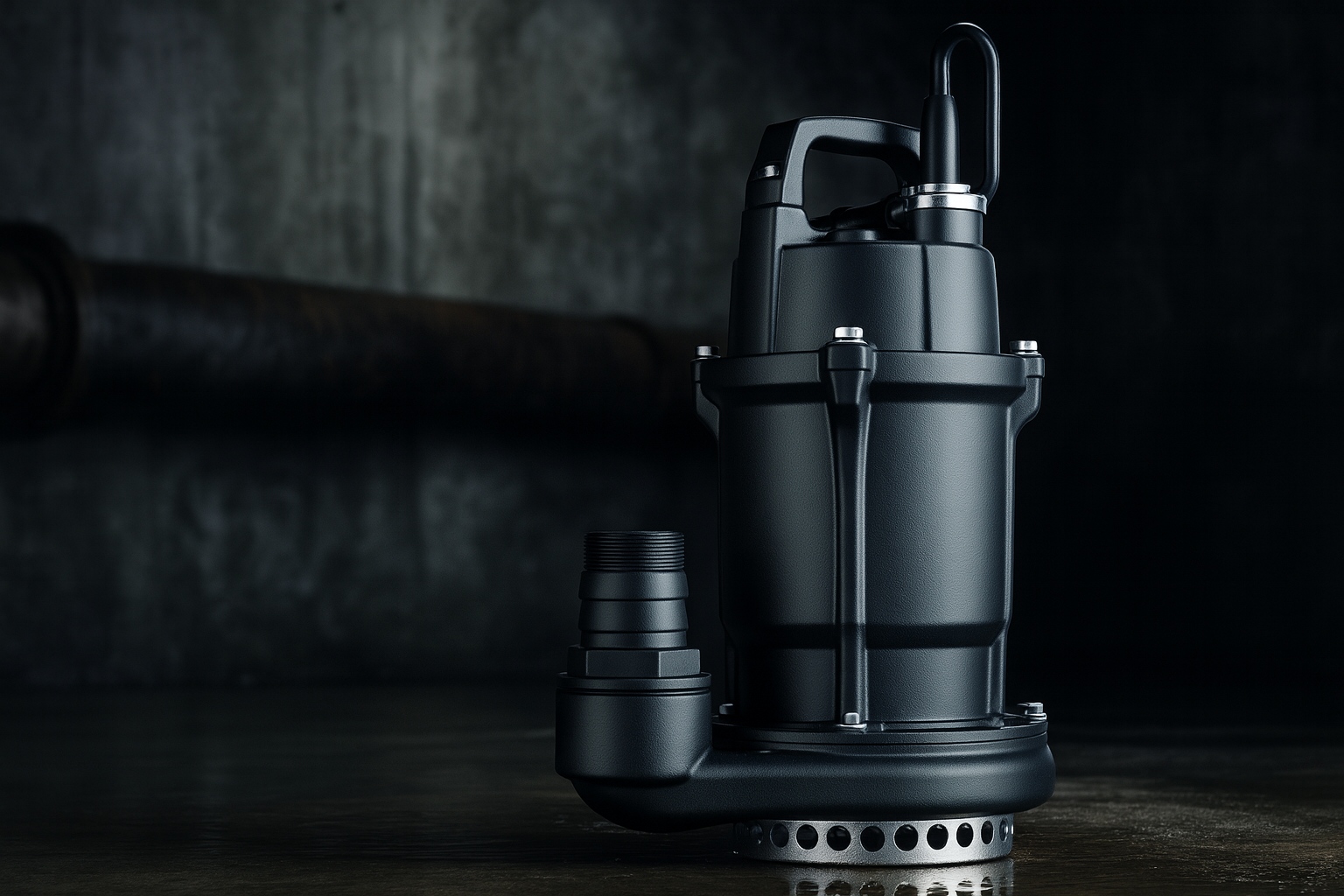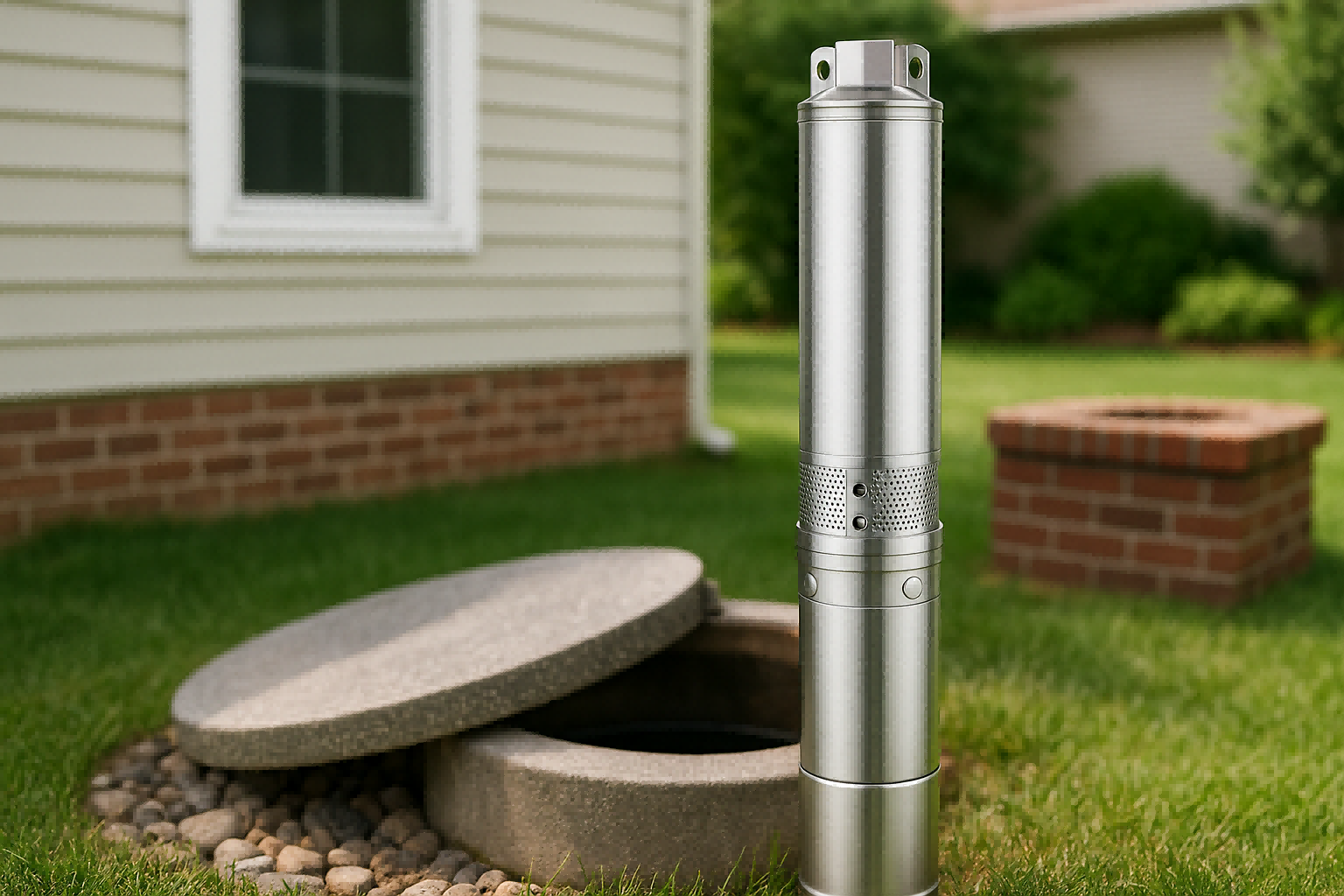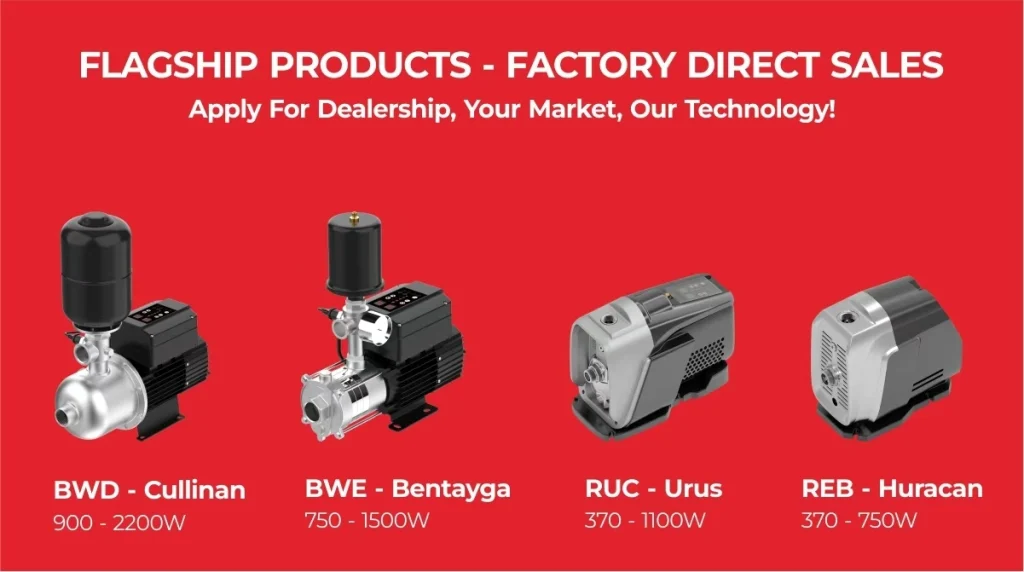Struggling with pump problems?
Submersible pumps are powerful but have a hidden drawback.
This issue can lead to significant downtime and unexpected expenses.
The major disadvantage of a submersible pump is its difficult and costly maintenance. Since the entire unit is submerged, it must be completely pulled out of the water for any inspection or repair. This process is labor-intensive, requires special equipment, and can be very expensive.

Understanding this primary drawback is crucial.
However, it is not the only challenge you might face.
Let's delve deeper into the specific issues that make these powerful pumps a double-edged sword.
Exploring these factors will help you make a more informed decision for your water management needs.
Maintenance and Repair
Is your pump deep in a well?
A simple repair can become a major project.
This difficult access turns routine maintenance into a complex and expensive ordeal.
Maintenance on a submersible pump is challenging because access is so restricted. The unit must be lifted from its location for any work. This involves heavy machinery, significant labor, and potential operational downtime, making even minor repairs a major undertaking.
The process of servicing a submersible pump is fundamentally different from a surface pump.
You cannot simply walk up to it and open a service panel.
Every maintenance task begins with a major logistical operation.
This reality shapes the entire ownership experience.
The Challenge of Physical Access
Accessing the pump is the first and biggest hurdle.
The pump is, by design, out of sight and out of reach.
For a shallow sump, this might be a minor inconvenience.
For a deep well, this becomes a significant and costly project.
Specialized equipment like a crane or a dedicated pump hoist is often required.
This equipment needs to be brought to the site.
The process involves disconnecting power safely.
Then, the heavy pump, along with its discharge piping and power cable, must be pulled up.
This is a labor-intensive job requiring a skilled crew.
The risk of dropping the pump or damaging the well casing during removal or re-installation is always present.
All these factors add up to significant downtime for your water system.
Complexity of Submerged Repairs
Once the pump is on the surface, the challenges continue.
The most common and serious failure is a seal breach.
Seals are what protect the internal motor from the surrounding fluid.
When a seal fails, water or other fluids can enter the motor housing.
This can cause a catastrophic electrical short and motor burnout.
Repairing a failed seal and a water-damaged motor is a complex task.
The entire unit must be disassembled in a clean workshop environment.
The motor windings may need to be dried out or completely rewound.
Contaminated oil must be replaced.
Specialized parts, which may not be readily available, are often needed.
This is far more involved than repairing a surface pump, where components are easily accessible and isolated from the motor.
The True Cost of Inaccessibility
It is important to understand how access impacts the bottom line.
Consider the steps and associated costs:
| Maintenance Stage | Associated Challenges & Costs |
|---|---|
| Diagnosis | Often difficult to diagnose problems remotely. You might need to pull the pump just to find out what's wrong. |
| Extraction | Requires a service crew and heavy equipment (crane/hoist). This leads to high labor and rental costs. |
| Repair | Specialized knowledge is needed for sealed motors. Parts can be expensive and may have long lead times. |
| Re-Installation | The same crew and equipment are needed again. Risk of damage during re-installation is a factor. |
| Downtime | The entire time the pump is being serviced, your system is down. This can halt operations completely. |
This process makes proactive, preventive maintenance very difficult.
As a result, many owners run their submersible pumps to failure.
This reactive approach is almost always more expensive than planned maintenance.
Cost
Worried about your budget?
The initial price of a submersible pump is just the beginning.
The total cost of ownership can be surprisingly high due to hidden expenses.
Submersible pumps typically have a higher initial a cost than surface pumps due to their specialized, waterproof design. Furthermore, the costs for repair and maintenance are significantly elevated because of the labor and equipment required to access the pump, making the total lifetime cost a major consideration.
When evaluating a pump, you must look beyond the sticker price.
The total cost of ownership includes the initial purchase, installation, energy use, maintenance, and eventual replacement.
For submersible pumps, the maintenance and repair slices of the cost pie are often much larger than anticipated.
This can catch many users off guard.
Understanding the Higher Initial Cost
The design of a submersible pump is inherently more complex than that of a surface-level pump.
This complexity directly translates to a higher manufacturing cost.
Let's break down why.
- Hermetically Sealed Motor: The electric motor must be perfectly sealed to prevent fluid from entering. This requires precision engineering, robust gaskets, and oil-filled housings, all of which add to the cost.
- Waterproof Materials: The pump's housing, casing, and fasteners must be made from corrosion-resistant materials. Materials like stainless steel are common but are more expensive than the cast iron used in many surface pumps.
- Specialized Cabling: The electrical cable that runs from the surface down to the pump must be specially designed for permanent submersion. It needs to be waterproof, abrasion-resistant, and durable, which makes it more costly than standard electrical wire.
These built-in features are non-negotiable.
They are essential for the pump to function in its intended environment.
This means you are paying a premium for the "submersible" capability from day one.
The Overlooked Repair and Labor Costs
The high cost of maintenance is the most significant financial drawback over the pump's life.
As discussed, every repair job starts with pulling the pump.
This is a job that cannot be done by one person with a wrench.
You must budget for several factors that do not apply to surface pumps.
Breakdown of Typical Repair Expenses
Here is a look at what a typical repair invoice might include:
- Service Call Fee: The initial cost for a technician to come to your site.
- Labor Hours: This is the biggest variable. It includes time for diagnosis, setting up equipment, pulling the pump, the actual repair, and re-installation. This can easily be a full day's work for a two-person crew.
- Equipment Rental: If the service company needs to rent a crane or a large pump hoist, that cost is passed on to you.
- Replacement Parts: Parts for submersible pumps, especially motor components and seals, are often more expensive than their surface-pump equivalents.
- Workshop Fees: If the pump has to be taken back to a shop for complex repairs like a motor rewind, you will be charged for that bench time.
A seemingly "minor" issue can quickly escalate into a bill totaling thousands of dollars.
| Cost Component | Submersible Pump | Surface Pump |
|---|---|---|
| Initial Purchase | Higher | Lower |
| Installation | Can be complex (deep wells) | Simpler |
| Minor Repair (e.g., clog) | High (requires pulling) | Low (easy access) |
| Major Repair (e.g., seal) | Very High (requires pulling, shop time) | Moderate |
This table clearly illustrates the financial risk associated with submersible pump maintenance.
The "out of sight, out of mind" nature of the pump often leads to a false sense of security until the first failure occurs.
Operational and Environmental Limitations
Think a submersible pump is a fit-and-forget solution?
These pumps have strict operational rules.
Breaking them can lead to rapid and permanent damage.
Submersible pumps cannot run dry; they must be fully submerged to cool the motor and operate correctly. Constant exposure to corrosive water or abrasive sand can degrade materials quickly. They are also vulnerable to electrical issues from lightning and cable faults, and can clog in high-solids environments.
Beyond cost and maintenance, a submersible pump's performance is tied to its environment.
It is not a universally perfect solution.
You must match the pump's capabilities and limitations to your specific application.
Ignoring these limitations is a common path to premature pump failure.
The Critical Need for Submersion
The most important operational rule is that the pump must always be submerged.
The surrounding fluid is not just what the pump moves.
It is also the pump's cooling system.
The motor generates a significant amount of heat during operation.
This heat is transferred from the motor housing into the surrounding water.
If the water level drops and exposes the pump, it can no longer cool itself effectively.
This condition is known as "running dry."
When a pump runs dry:
- The motor temperature rises rapidly.
- Internal components like windings and seals can overheat and melt.
- The bearings can seize.
- Permanent, catastrophic damage can occur in just a few minutes.
To prevent this, many installations require dry-running protection sensors.
These sensors shut the pump off if the water level drops too low.
While effective, these sensors add another layer of complexity and cost to the system.
Vulnerability to the Environment
The pump's environment is a constant threat to its longevity.
Constant submersion means constant exposure.
Corrosion
This is a major concern, especially in certain types of water.
- Saltwater: Highly corrosive to many metals. Requires pumps made of high-grade stainless steel, bronze, or specialized alloys, which are very expensive.
- Acidic Water: Low pH water can eat away at pump components.
- High Mineral Content: Can cause scale buildup on impellers and inside the housing, reducing efficiency and eventually causing failure.
Abrasives
Many water sources contain sand, silt, or other small solid particles.
These act like sandpaper on the pump's internal components.
The impellers, which spin at high speed, are particularly vulnerable.
Abrasive wear reduces the pump's efficiency over time.
Eventually, it will wear down components to the point of failure.
Pumps designed for abrasive service have hardened components but come at a higher price.
Electrical and Clogging Risks
Two final limitations are critical to consider.
Electrical Risks
The power cable is the pump's lifeline, but also a point of weakness.
It runs from a dry, protected control box to a wet, harsh environment.
- Cable Damage: The cable can be damaged during installation or if it rubs against the well casing. Any breach in its waterproof jacket can lead to a short circuit.
- Lightning Strikes: A lightning strike near the wellhead can send a massive power surge down the cable, destroying the pump's motor and controls instantly. Proper grounding and surge protection are essential but often overlooked.
Clogging
Submersible pumps are designed to move fluids, not solids.
In applications like wastewater or dewatering, this is a major problem.
Debris such as rags, "flushable" wipes, and other solids can easily wrap around the impeller.
This is known as clogging.
A clogged pump will stop moving water, and its motor will strain against the blockage.
This can cause the motor to overheat and trip its overload protection.
If the blockage is not cleared, the motor can burn out.
Pumps designed for solids handling, such as grinder or chopper pumps, exist to combat this.
However, they are more expensive and have their own maintenance needs.
This highlights the importance of choosing the right type of submersible pump for the job.
Conclusion
Submersible pumps are powerful tools.
However, their key disadvantages are difficult maintenance, high costs, and strict operational limits.
Understanding these drawbacks is vital for any potential user.
FAQs
What happens if a submersible pump is not fully submerged?
If not fully submerged, the pump will overheat due to a lack of cooling from the surrounding water. This can quickly cause permanent damage to the motor and seals.
Can a submersible pump be repaired?
Yes, but repairs are difficult and costly. The pump must be completely removed from the water, and fixing issues like failed seals requires specialized service and parts.
How do you protect a submersible pump?
Protect it with dry-run sensors, proper grounding against lightning, and by choosing a model made from materials resistant to corrosion and abrasion from your specific water source.
What is the life expectancy of a submersible pump?
Life expectancy varies widely from 5 to 15 years. It depends heavily on run time, water quality (corrosion/abrasives), and handling of electrical surges.
Are submersible pumps expensive to run?
They can be very energy-efficient when properly sized for the task. However, the total cost of ownership can be high due to expensive repairs and maintenance.
Why do submersible pumps fail?
Common failure causes include running dry (overheating), seal failure leading to water in the motor, electrical damage from power surges, and wear from abrasive materials like sand.
Can a submersible pump run continuously?
Yes, many submersible pumps are designed for continuous operation. However, they must remain fully submerged to ensure proper cooling throughout their run time.
Why does my submersible pump keep shutting off?
It may be shutting off due to built-in protections. Common triggers include low water levels (dry-run protection), overheating, or an electrical issue like overcurrent.








